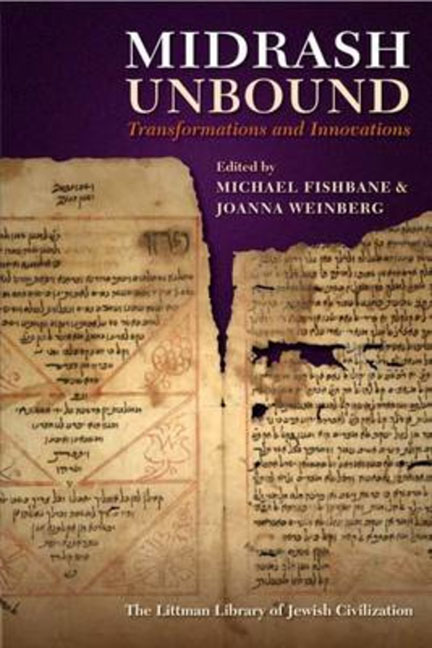1 - Midrash and the Meaning of Scripture
Summary
AN OLD TRADITION found in the midrash Sifrei Deuteronomy (343) presents a powerful image of the giving of the Law: God's word appears as a fire that emerges from his right hand, encircles the nation, and returns; the fire is then transferred by God from his left hand to his right, whereupon it is inscribed upon the tablets of Moses. In this way the sages gave mythic realism to the scriptural phrase miyemino esh dat lamo, ‘from His right hand [there emerged] a fiery law for them [the nation]’ (Deut. 33: 2). Another passage, stating that ‘the voice of the Lord carves out flames of fire’ (Ps. 29: 7), is expressly added to indicate the worldencompassing power of divine speech. This verse from the Psalms serves here to reinforce the main teaching that the tablets were chiselled by tongues of fire (the verse was thus presumed to say that God's ‘voice … carves out the Decalogue by flames of fire’). Elsewhere, Rabbi Akiva gave just this explication as an independent account of God's fiery words at Sinai. The editor of our Sifrei passage has chosen to subordinate this teaching to his interest in the heavenly arm as an agent of the inscription.
In our midrashic myth God's word emerges from the divine essence as visible fire and takes instructional shape as letters and words upon the tablets. The written law is thus an extension of divine speech—and not merely its inscriptional trace. This identification of God's utterance and Torah is the hermeneutical core of Judaism. Midrash works out the details.
The sages were alive to this point. In a teaching joined to a version of the aforementioned myth, Rabbi Azariah and Rabbi Judah bar Simon (in the name of Rabbi Joshua ben Levi) pondered the question of how much the Israelites actually learned at Sinai (S. of S. Rabbah 1: 2, §2). They proposed that the people learned all the 613 (principal) commandments of (rabbinic) Judaism at that time. This interpretation links the Ten Commandments of the tablets to all the teachings that will emerge through Jewish discourse. Such a notion is first found explicitly in Philo; but something of it can already be found in tannaitic teachings of the first two centuries CE.
- Type
- Chapter
- Information
- Midrash UnboundTransformations and Innovations, pp. 13 - 24Publisher: Liverpool University PressPrint publication year: 2013

